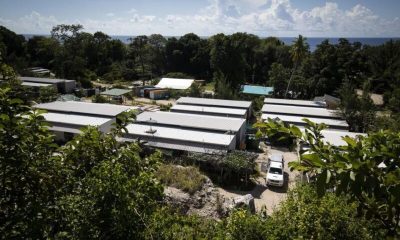Science
Astronomers want to get in on NASA’s push to the moon – Space.com

NASA wants to go to the moon
, and astrophysicists want their instruments to ride along, too.
The details are still in flux, as scientists are figuring out what makes the most sense given the scientific and logistical constraints of the moon. But they’re confident that NASA’s current priorities at the moon offer benefits that would support their goals. The agency’s priorities are embodied by the Artemis program
, which aims to land humans on the moon in 2024 in a sustainable, long-term way that offers a future for science as well as exploration.
“Heavy launch capability, astronauts, serviceability, in-space assembly — all of those things are things that we care deeply about,” Heidi Hammel, a planetary astronomer at the Association of Universities for Research in Astronomy said during the Lunar Surface Science Virtual Workshop held on May 28. “And they are a core part of the return to the moon initiative.”
Related: NASA sees inspiration parallels between Apollo and Artemis moonshots
A few telescopes have already operated on the moon. NASA’s Apollo 16
mission in 1972 carried an ultraviolet telescope that astronaut John Young used to image nebulas, stars and Earth’s atmosphere. China’s Chang’e-3 mission
, which landed on the moon in 2013, also carried an ultraviolet telescope.
But the moon is generally new territory for telescopes, Hammel said, and the details of how astrophysicists might tap into the Artemis program remain to be determined. One important distinction may be between telescopes on the moon and telescopes at the moon. That’s because even terrestrial dust is a problem for delicate astronomy equipment — and lunar dust is a whole lot more aggravating
than its Earthly counterpart.
That said, it’s not impossible to picture telescopes thriving on the lunar surface, Hammel said. She pointed to a volcanic mountain at the heart of Hawaii Island, Maunakea. Today, it’s known for the dozen astronomy facilities perched on the mountain’s summit
, where the atmosphere is still and observing conditions are favorable. But in the 1960s, it was a key training site for Apollo-era astronauts practicing moonwalks and geology.
“Maunakea was a proving ground for

-

 General23 hours ago
General23 hours agoFormer Neighbours star Damien Richardson found guilty of public Nazi salute
-

 Noosa News20 hours ago
Noosa News20 hours agoCrystal Beale’s final moments revealed before her body was found in Brisbane River
-

 General23 hours ago
General23 hours agoNauru refugees. Indefinite detention a definite breach of High Court ruling
-

 General22 hours ago
General22 hours agoQueensland teachers to hold statewide rallies but stop short of announcing strike date
